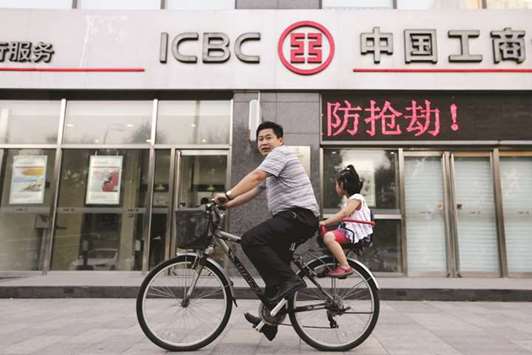China’s top lenders are reporting their best profit growth in three years on better net interest margins, with Beijing’s crackdown on shadow financing and high leverage expected to further drive recovery this year.
The strong 2017 results suggest that Beijing has been successful in pushing smaller lenders to cut their exposure to riskier financing practices – in turn helping reduce competition for the state-backed behemoths.
Over the past decade, small and mid-sized banks had been raking in more profits through aggressive lending via shadow-banking channels.
But the tide has turned, with core banking emerging as winner from the regulatory clampdown.
“The banks that will do well this year are those that have national franchises, “safe” brands, relatively clean balance sheets, competitive products, sticky core deposits and strong credit skills,” said John Ott, partner with Bain & Company and a leader with its Greater China financial services practice.
According to analysts, Industrial and Commercial Bank of China Ltd (ICBC), China’s top bank by market capitalisation, has produced the biggest earnings “beat” so far for 2017.
“We have a strong macro economic environment, a good (internal) mechanism, and an improving quality foundation for loans,” ICBC chairman Yi Huiman said on Tuesday. “It can be expected that asset quality will continue to improve.”
ICBC reported a non-performing loan ratio of 1.55%, versus 1.62% a year ago.
Analysts noted that the large gap between that ratio and a 1.26% ratio for loans more than 90 days overdue – a key point after which troubled loans are considered bad – suggests ICBC had been conservative in its provisioning and could have room to reduce the overall rate further.
Non-performing loan (NPL) ratios also improved for China’s second- and third-largest lenders by assets, China Construction Bank Corp (CCB) and Agricultural Bank of China Ltd (AgBank).
AgBank’s NPL ratio fell to 1.81% from 2.37%, while CCB’s ratio slipped from 1.52% to 1.49%.
This compares to an industry-wide level of 1.74%.
Banks’ balance sheets are also likely to get a boost from a recent relaxation of bad-loan buffer rules.
Earlier this month, regulators cut the reserves commercial banks must hold against bad loans from 150% to as low as 120% – the exact rate will be partly dependent on how quickly banks shed their bad loans.
ICBC, AgBank and CCB reported a combined net profit of 724bn yuan ($115.31bn), up 4.1% on 2016, driven by a return to core lending businesses from fee-based incomes.
All three saw their best annual profit growth since 2015.
At ICBC, 2017 net fee and commission income fell 3.7% to 139.6bn yuan, while at AgBank it fell 19.8% to 72.9bn yuan.
Their non-interest income, which includes private wealth management and investment banking fees, made up a lower percentage of their operating revenue.
The banks’ net interest margins, a key measure of profitability for banks’ most basic lending business, rose, after years of weakness brought on by successive rate cuts.
Results from Bank of China and Bank of Communications Co Ltd this week are expected to highlight a similar return to strength.
Because bigger banks hold greater deposits – the cheapest form of funding – and are less reliant on borrowing from the wholesale markets than smaller banks, they are better positioned to capitalise on rising market interest rates.
“Net interest margin will stabilise and improve (next year),” AgBank’s vice-president Zhang Keqiu told Reuters on the sidelines of the bank’s press conference on Tuesday.

A man and his daughter ride a bicycle past a branch of the Industrial and Commercial Bank of China in Beijing. ICBC reported a non-performing loan ratio of 1.55%, versus 1.62% a year ago.

